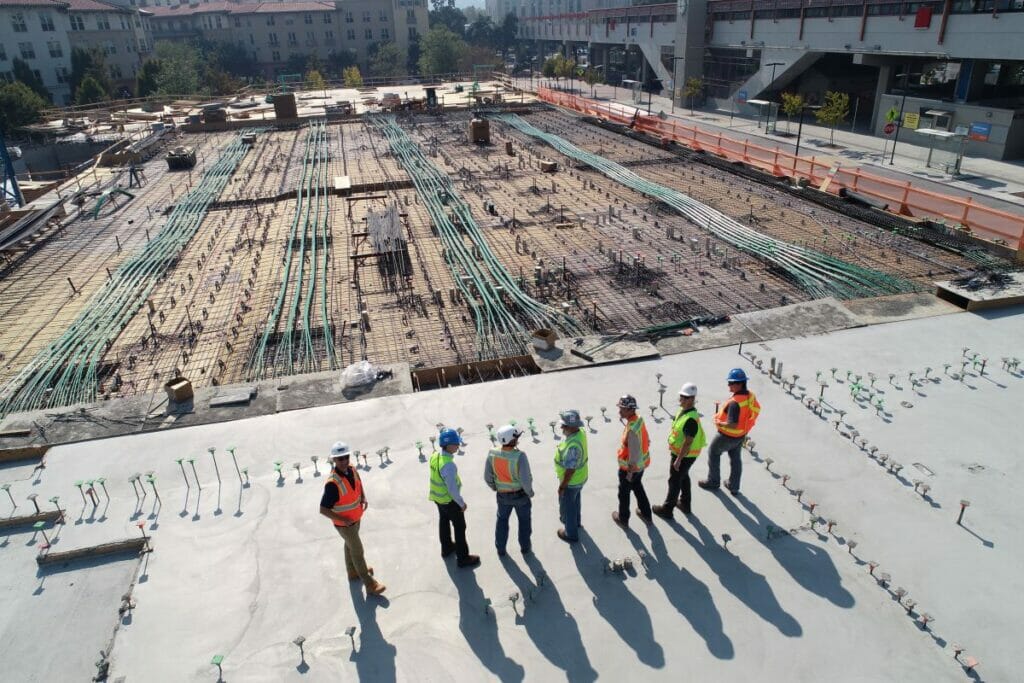Real estate development is a complex process that requires careful planning and execution. One of the most critical aspects of successful real estate development is financial planning. In this article, we’ll cover why financial planning for real estate developers is instrumental in ensuring long-term success.
Understand Your Financial Goals
When it comes to financial planning for real estate developers, understanding your financial goals is the foundation on which everything else is built. Having a clear idea of what you want to achieve financially in the short and long-term is essential to creating an effective financial plan.
To ensure that your financial goals are clear and actionable, it’s important to make them specific, measurable, achievable, relevant, and time-bound (SMART). This means that each goal should be defined in a way that is:
- Specific: Clearly defined and well-understood.
- Measurable: Quantifiable and can be tracked to assess progress.
- Achievable: Realistic and attainable based on current resources and capabilities.
- Relevant: Aligned with overall business objectives and priorities.
- Time-bound: Has a specific timeframe for completion.
For example, a financial goal that meets these criteria might be to acquire a specific piece of property within the next two years and generate a certain amount of rental income from it within the next five years. This goal is specific, measurable, achievable, relevant, and time-bound, making it a SMART financial goal.
By having SMART financial goals, real estate developers can create a roadmap for achieving their objectives and stay on track. This approach to financial planning for real estate developers allows them to prioritize and focus on the most important goals and make strategic decisions that align with their overall financial objectives. Additionally, having clear financial goals can help real estate developers measure their progress, track their successes, and make necessary adjustments along the way.
Develop a Financial Plan
Developing a financial plan is a critical step in achieving long-term financial success as a real estate developer. A financial plan is essentially a roadmap that outlines how you will achieve your financial goals over time. To create a comprehensive financial plan, you need to consider several key elements:
- Budgeting: Creating a detailed budget is the first step in developing a financial plan. A budget helps you understand your current financial situation, including your income, expenses, and cash flow. It allows you to identify areas where you can cut costs or reallocate resources to achieve your financial goals.
- Resource assessment: It’s important to assess the resources you have available to you, including your financial resources, your network, and your skillset. This will help you understand what you can realistically achieve and where you may need to seek additional support.
- Timeline: Developing a timeline for completing projects and achieving financial goals is critical. This timeline should be realistic and based on your available resources and budget. It should also be flexible enough to account for unexpected challenges or opportunities.
- Risk assessment: As a real estate developer, there are always risks associated with any project or investment. A comprehensive financial plan should include an assessment of potential risks and how they can be mitigated. This includes factors such as market volatility, regulatory changes, and unexpected events such as natural disasters.
By developing a comprehensive financial plan, real estate developers can gain a better understanding of their financial situation, assess their available resources, and identify potential risks and opportunities. This approach allows developers to make informed decisions, prioritize resources, and make strategic investments that will help them achieve their financial goals over time.

Fundamentals of Financial Planning for Real estate Developers
This plan serves as the compass, guiding developers through the often-tumultuous waters of property investment and ensuring that they are not only financially secure but also strategically positioned for growth. The intricacies of such a plan delve deep into multiple facets, each playing a pivotal role in the overall financial trajectory of the project. Key categories such as project descriptions, market analyses, cost estimations, and revenue forecasts, among others, form the core of this financial blueprint. Together, these elements synergize to create a comprehensive roadmap, ensuring that every real estate developer is equipped with the tools and insights to navigate the multifaceted domain of property development effectively.
Project Description
Understanding the property is the foundation of the financial planning process. A detailed description includes the property’s location, nearby landmarks, and its accessibility. It’s crucial to specify the type of real estate, whether residential, commercial, or mixed-use. The total project size, number of units, and amenities determine the property’s value. This initial understanding aids the real estate financial plan. A clear picture of the project helps in setting financial goals. Ultimately, it bridges the gap between the real estate developer’s vision and the expectations of potential investors.
Market Analysis
For effective financial planning, understanding the real estate market is paramount. The target market needs clear identification, highlighting the demographics and buying behavior. An in-depth analysis of market demand and supply provides insights into potential vacancy rates. Surveying the competitive landscape helps in setting the property’s pricing or rental income. Price benchmarking against similar properties offers a competitive edge. With a comprehensive market analysis, the real estate development business can align with market dynamics. This understanding serves as a base for the investment strategy.
Project Timeline
A real estate development project timeline is the backbone of the financial planning process. It starts from property acquisition and spans to sale or lease. Setting key milestones with expected completion dates aids in cash flow management. It assists real estate professionals in making timely investment decisions. The timeline offers a visual representation of the project’s lifecycle. It provides clarity for both the real estate investor and financial advisors. By monitoring the timeline, adjustments can be made ensuring the project stays on track.
Cost Estimation
Estimating costs is a crucial step for your investment. Acquisition costs involve the initial investment in the property. Then comes construction costs, which vary depending on the property type and location. Soft costs like architectural, marketing, and legal fees are vital. Financing costs, especially the interest on loans, affect the project’s return on investment. Comprehensive financial planning includes a contingency fund, ensuring stable financial health even if unexpected expenses arise.
Revenue Forecast
In financial planning for real estate developers, forecasting revenue is vital. This includes rental income projections and gains from property sales. Factoring in other revenue sources like parking or amenities diversifies income. Accurate revenue forecasting determines the cash flow of your rental properties. It enables the developer to estimate ROI, essential for future financial planning. Through forecasting, the developer can prepare for either reinvesting in the property or searching for a new investment opportunity.
Cash Flow Projections
Cash flow is the lifeblood of the real estate investing process. Monthly or quarterly cash flow forecasts provide a clear financial picture. It’s crucial to highlight inflows from property sales or leases. Major outflows, especially for construction and other costs, need careful consideration. Understanding cash flow peaks and troughs aids in efficient financial planning. Proper projection ensures meeting these obligations on time, helping to raise the cibil score, vital for future loans.
Financing Structure
Real estate finance revolves around a mix of equity and debt. This structure determines the project’s risk and return profile. Interest rates, loan terms, and covenants influence the cash flow of your rental property. The financial plan should include projected ROI and IRR, reflecting the investment’s profitability. A well-defined financing structure aligns with the investor’s strategy for investing. It also provides clarity on when and how much to borrow, essential for maintaining financial security.
Risk Analysis
Risk management is part and parcel of financial planning. Identifying risks, be it construction delays or market downturns, is crucial. For every identified risk, mitigation strategies should be formulated. Calculating the expenses and cash flow under various scenarios helps in risk assessment. Real estate developers must be prepared for both short-term and long-term financial risks. Proper risk analysis supports informed investment decisions, ensuring real estate investments align with life goals.
Tax Planning
Tax planning in real estate finance is about more than just reducing liabilities. It’s about understanding expected tax burdens and strategizing accordingly. Knowledge of available incentives, deductions, or credits can significantly reduce the tax impact. Proper tax planning can enhance the return on real estate assets. Developers should seek advice from certified financial experts to ensure compliance. Effective tax strategies can help property owners reduce their tax burden, optimizing their overall financial life.
Exit Strategy
Formulating an exit strategy is a pivotal part of financial planning. Deciding whether to sell units, convert them to rentals, or refinance impacts the investment’s end game. It’s vital to align this strategy with financial goals and risk tolerance. The strategy should be flexible enough to adapt to changing real estate market dynamics. An effective exit strategy ensures maximum gains from real estate assets. It provides a direction, ensuring every real estate investor reaps the benefits of their hard work.
Contingency Plan
Unforeseen setbacks are inherent in real estate development. Financial planning should thus include backup plans. These contingencies safeguard the developer’s financial interests in turbulent times. A contingency reserve, typically spanning six months, is recommended. This ensures the developer can meet liabilities even amidst unexpected challenges. Having this reserve offers a safety net, reinforcing financial security for the business owner. It’s a testament to the comprehensive nature of specific financial planning for real estate developers.
Final Thoughts on Financial Planning for Real Estate Developers
Financial planning for real estate developers is the process that determines the success of real estate developers. Securing investor financing or development funds hinges on a well-thought-out plan. The roadmap provided by a financial plan guides real estate professionals. Traditional financial approaches merge with real estate expertise, creating a unique planning landscape. For every real estate investor, aligning property decisions with broader life goals is imperative. From acquisition to exit, financial planning remains a constant companion. When it comes to real estate, meticulous financial planning can be the difference between success and setback.
For those who have questions or require assistance with financial planning for real estate developers, CPA Street is available to provide expert guidance and support. As a real estate accounting firm, we have experience working with real estate developers at all stages of development.



